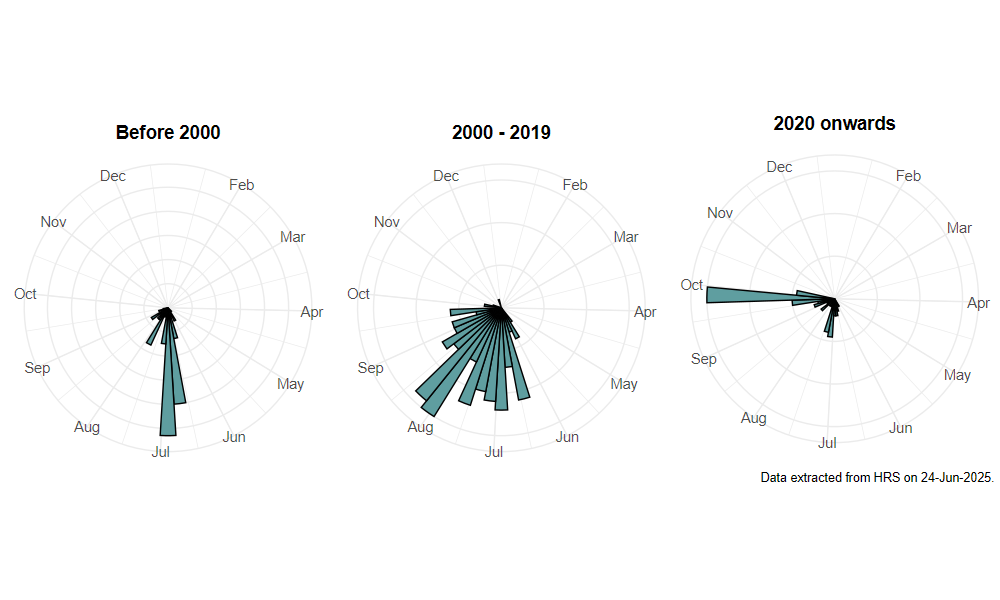Pelecocera tricincta Meigen, 1822
Identification
Identification difficulty = 2. ![]()
![]() according to Ball & Morris, 20241
according to Ball & Morris, 20241
Biology
This is a heathland species that favours wetter heaths with Cross-leaved Heath Erica tetralix. The larva is unknown. Adults are flower visitors and can be found on yellow, low-growing flowers such as Tormentil Potentilla erecta, Cats-ear Hypochoeris radicata, hawkbits Leontodon sp. and buttercups Ranunculus sp. along heathland rides and heath verge. On occasions, it can occur in numbers, but records more frequently refer to single individuals.
Flight period
The following plots show the number of unique records per week excluding those reported to be of immature stages.

Status
Lower Risk (Nationally scarce) - Ball & Morris, 20142. Rare (RDB3) - Falk, 19913 and Shirt, 19874.
Distribution
This is a southern species that is restricted to the heathlands of Devon, Dorset, Isle of Wight, South Hampshire, North Hampshire, West Gloucestershire, Surrey and East Sussex. Records seem to have become more frequent since 2000.

Trends
The following plots show the Frescalo TFactor vs year and a map of the rescaled frequency (all records) for the species.
-
Ball, S., & Morris, R. (2024). Hoverflies of Britain and Ireland. WILDGuides (3rd ed.). Oxford: Princeton University Press. ↩
-
Ball, S., & Morris, R. (2014). A review of the scarce and threatened flies of Great Britain. Part 6: Syrphidae. ( No. 9). Species status (pp. 1–130). Peterborough: JNCC. ↩
-
Falk, S. (1991). A review of the scarce and threatened flies of Great Britain. ( No. 39). Research and Survey in Nature Conservation (pp. 1–194). Peterborough: NCC. ↩
-
Shirt, D. (Ed.). (1987). Red Data Books: 2. Insects. Peterborough: NCC. ↩